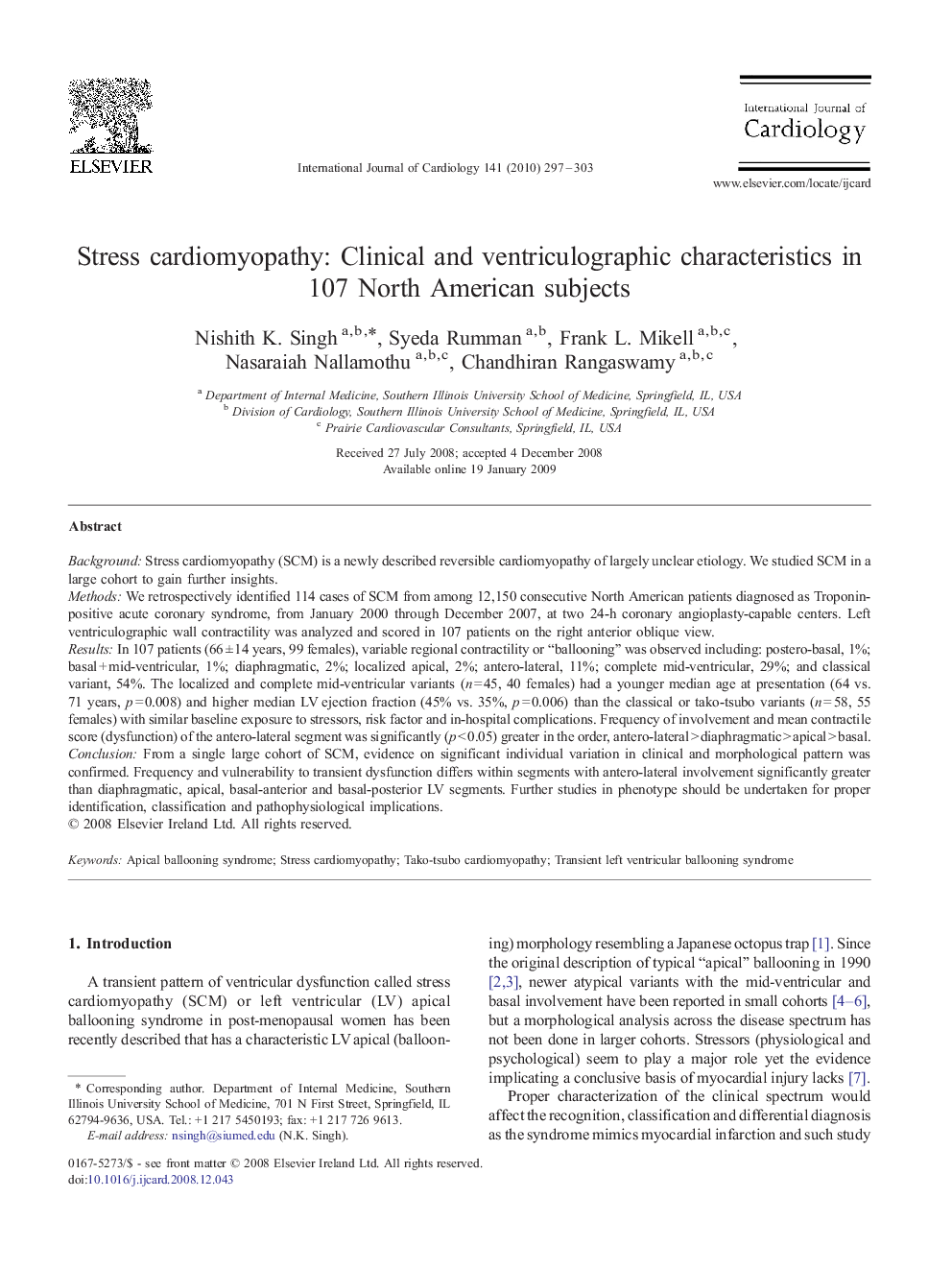| Article ID | Journal | Published Year | Pages | File Type |
|---|---|---|---|---|
| 2932746 | International Journal of Cardiology | 2010 | 7 Pages |
BackgroundStress cardiomyopathy (SCM) is a newly described reversible cardiomyopathy of largely unclear etiology. We studied SCM in a large cohort to gain further insights.MethodsWe retrospectively identified 114 cases of SCM from among 12,150 consecutive North American patients diagnosed as Troponin-positive acute coronary syndrome, from January 2000 through December 2007, at two 24-h coronary angioplasty-capable centers. Left ventriculographic wall contractility was analyzed and scored in 107 patients on the right anterior oblique view.ResultsIn 107 patients (66 ± 14 years, 99 females), variable regional contractility or “ballooning” was observed including: postero-basal, 1%; basal + mid-ventricular, 1%; diaphragmatic, 2%; localized apical, 2%; antero-lateral, 11%; complete mid-ventricular, 29%; and classical variant, 54%. The localized and complete mid-ventricular variants (n = 45, 40 females) had a younger median age at presentation (64 vs. 71 years, p = 0.008) and higher median LV ejection fraction (45% vs. 35%, p = 0.006) than the classical or tako-tsubo variants (n = 58, 55 females) with similar baseline exposure to stressors, risk factor and in-hospital complications. Frequency of involvement and mean contractile score (dysfunction) of the antero-lateral segment was significantly (p < 0.05) greater in the order, antero-lateral > diaphragmatic > apical > basal.ConclusionFrom a single large cohort of SCM, evidence on significant individual variation in clinical and morphological pattern was confirmed. Frequency and vulnerability to transient dysfunction differs within segments with antero-lateral involvement significantly greater than diaphragmatic, apical, basal-anterior and basal-posterior LV segments. Further studies in phenotype should be undertaken for proper identification, classification and pathophysiological implications.
